![]()
![]()
![]()
(Speakers listed below in name alphabet order)
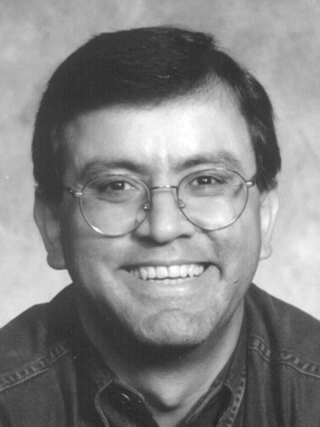
Ender Ayanoglu (IEEE Fellow)
Professor, University of California, Irvine, USA
Title: Massive MIMO with Spatially Correlated Antennas
Time: 10:00-10:30, Tuesday, February 18, 2020.
Abstract:
The analysis of a single-carrier massive MIMO system for the frequency selective Gaussian multiuser channel in uplink and downlink directions
is presented. Expressions for the achievable sum rate when there
is spatial correlation among antennas at the base station is carried
out. It is known that the channel matched filter precoder (CMFP)
performs the best in a spatially uncorrelated downlink channel. We
show that, in a spatially correlated downlink channel with two
different correlation patterns and at high long-term average power,
two other precoders can have better performance. For the uplink channel,
part of the equivalent noise in the channel goes away, and implementing
two conventional equalizers leads to a better performance compared to
the channel matched filter equalizer (CMFE). These results are
verified for uniform linear and uniform planar arrays. In the latter,
due to more correlation, the performance drop with a spatially
correlated channel is larger, but the performance gain against channel
matched filter precoder or equalizer is also bigger. In highly correlated
cases, the performance can be a significant multiple of that of the
channel matched filter precoder or equalizers.
Biography:
Ender Ayanoglu received the M.S. and Ph.D. degrees from Stanford University, Stanford, CA in 1982 and 1986, respectively, in electrical engineering. He was with the Communications Systems Research Laboratory, part of AT&T Bell Laboratories, Holmdel, NJ until 1996, and Bell Labs, Lucent Technologies until 1999. From 1999 until 2002, he was a Systems Architect at Cisco Systems, Inc., San Jose, CA. Since 2002, he has been a Professor in the Department of Electrical Engineering and Computer Science, University of California, Irvine, Irvine, CA, where he served as the Director of the Center for Pervasive Communications and Computing and held the Conexant-Broadcom Endowed Chair during 2002- 2010. His past accomplishments include invention of the 56K modems, characterization of wavelength conversion gain in Wavelength Division Multiplexed (WDM) systems, and diversity coding, a technique for link failure recovery in communication networks employing erasure coding in 1990, prior to the publication of the first papers on network coding. During 2000-2001, he served as the founding chair of the IEEE-ISTO Broadband Wireless Internet Forum (BWIF), an industry standards organization which developed and built a broadband wireless system employing Orthogonal Frequency Division Multiplexing (OFDM) and a Medium Access Control (MAC) algorithm that provides Quality-of-Service (QoS) guarantees. This system is the precursor of today’s Fourth Generation (4G) cellular wireless systems such as WiMAX, LTE, and LTEAdvanced. From 1993 until 2014 Dr. Ayanoglu was an Editor, and since January 2014 is a Senior Editor of the IEEE Transactions on Communications. He served as the Editor-in-Chief of the IEEE Transactions on Communications from 2004 to 2008. From 1990 to 2002, he served on the Executive Committee of the IEEE Communications Society Communication Theory Committee, and from 1999 to 2001, was its Chair. Dr. Ayanoglu is the recipient of the IEEE Communications Society Stephen O. Rice Prize Paper Award in 1995 and the IEEE Communications Society Best Tutorial Paper Award in 1997. He has been an IEEE Fellow since 1998.
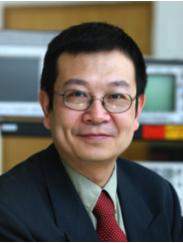
Zhizhang Chen (IEEE Fellow)
Professor, Dalhousie University, Canada
Title: Recent Progress on the Wireless Power Harvesting and Transfer for Communications
Time: 10:00-10:30, Thursday, February 20, 2020
Abstract:
Electromagnetics is the foundation of modern electrical and computer engineering that realize electrical and electronic technologies we enjoy and take for granted today. It has been used to transfer information and power in daily lives. In the wireless domain, however, it had not been considered and employed much for energy harvesting and power transfer until 2008 when a MIT research team lead by Prof. Marin Soljacic successfully demonstrated the mid-range wireless power. Research and development of wireless power harvesting and transfer systems have since attracted much attention for their potentials in changing the ways we live and work. At the same time, the internet-of-things and its applications will become so prevalent that large numbers of sensors will be required and efficient and effective power supply to them will become a challenge. In this presentation, we will review the principles of the wireless power harvesting and transfer, the state-of-the-art, their applications in communications and the future directions. In particular, we will focus on the physical constraints of the wireless power technologies, the potential solutions to them, simultaneous wireless information and power transfer technologies and the relevant safety issues.
Biography: Zhizhang (David) Chen received the B. Eng. degree in Radio Engineering from Fuzhou University, P. R. China, the Master degree in Radio Engineering from Southeast University, P. R. China, the Ph.D. degree in Electrical Engineering from the University of Ottawa, Canada. He was a NSERC post-doctoral fellow with McGill University, Montreal, Canada, in 1993. He is with the Department of Electrical and Computer Engineering, Dalhousie University, Halifax, Nova Scotia, Canada, where he is a Professor and was the Head of the Department of Electrical and Computer Engineering. He has been an adjunct or visiting professor with the University of Nottingham of UK, École Nationale Supérieure des Télécommunications de Bretagne of France, Shanghai Jiao Tong University, Beijing University of Aeronautics and Astronautics, Fuzhou University, Hong Kong University of Science and Technology and the University of Electronic Science and Technology of China. Prof. Chen has authored and co-authored over 380 journal and conference papers in applied electromagnetics, RF/microwave electronics, antennas, and wireless technologies. He was one of the originators of the unconditionally stable methods that have been highly cited and used. He and his team also developed a number of nonlinear ultra-wideband receivers and planar wireless power transfer transmitting and receiving structures. He has been invited to give many invited talks and plenary speeches at various international meetings, conferences and forums. He was also involved in organizing in many international workshops and conferences as Chair, Co-Chair, session organizer and committee members. He has served as guest editors for the IEEE Transactions on Microwave Theory and Techniques, IEEE Microwave Magazine, IEEE Journal of Electromagnetics, RF and Microwave in Medicine and Biology, and the International Journal of Numerical Modeling (by John Wiley). He is an associate editor of the IEEE Journal of Multiscale and Multiphysics Computational Techniques. He was also the founding Chair of the joint Signal Processing and Microwave Theory & Techniques Chapter of IEEE Atlantic Canada, the Chair of IEEE Canada Atlantic Section and a member of the Board of Directors for IEEE Canada. His current research interests are in time-domain electromagnetic modeling techniques, ultra-wideband wireless communication systems and wireless power transfer. He received of the 2005 Nova Scotia Engineering Award, a 2006 Dalhousie graduate teaching award, the 2007 & 2015 Dalhousie Faculty of Engineering Research Award, the 2013 IEEE Canada Fessenden Medal and Dalhousie University Professorship. He is the Fellow of the IEEE, the Canadian Academy of Engineering and the Engineering Institute of Canada.
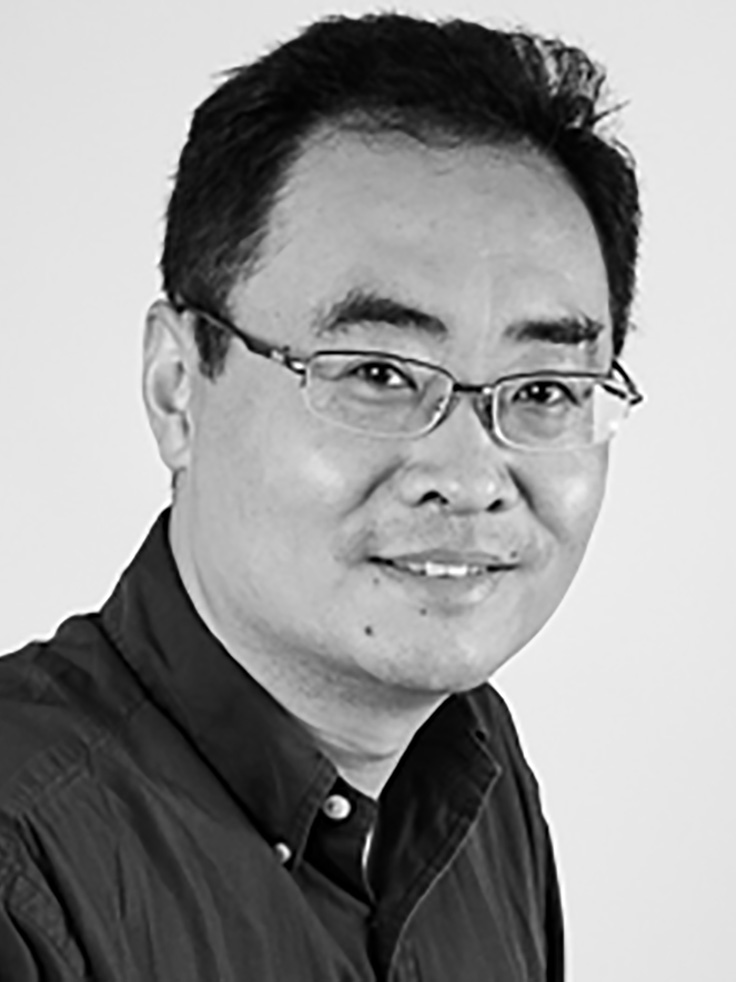
Yu Cheng
Professor, Illinois Institute of Technology, USA
Title: Machine Learning Meets Wireless Network Optimization: Exploring the Latent Knowledge
Time: 16:00-16:30, Thursday, February 20, 2020
Abstract:
With the superior capability of discovering intricate structure of large data sets, deep learning has been widely applied in various areas including wireless networking. While existing deep learning applications mainly focus on data analysis, the role it can play on fundamental research issues in wireless networks is yet to be explored. With the proliferation of wireless networking infrastructure and mobile applications, wireless network optimization has seen a tremendous increase in problem size and complexity, calling for a paradigm for efficient computation. This talk gives our recent studies on how to exploit deep learning for significant performance gain in wireless network optimization. Analysis on the flow constrained optimization problems suggests the possibility that a smaller-sized problem can be solved while sharing equally optimal solutions with the original problem, by excluding the potentially unused links from the problem formulation. To this end, we design a deep learning framework to find the latent relationship between flow information and link usage by learning from past computation experience. Numerical results demonstrate that the proposed method is capable of identifying critical links and can reduce computation cost by up to 50% without affecting optimality, thus greatly improve the efficiency of solving network optimization problems.
Biography: Yu Cheng (S’01–M’04–SM’09) received the B.E. and M.E. degrees in electronic engineering from Tsinghua University, Beijing, China, in 1995 and 1998, respectively, and the Ph.D. degree in electrical and computer engineering from the University of Waterloo, Waterloo, ON, Canada, in 2003. He is currently a Full Professor with the Department of Electrical and Computer Engineering, Illinois Institute of Technology, Chicago, IL, USA. His current research interests include wireless network performance analysis, network security, big data, cloud computing, and machine learning. Dr. Cheng was a recipient of the Best Paper Award at QShine 2007, the IEEE ICC 2011, the Runner-Up Best Paper Award at ACM MobiHoc 2014, the National Science Foundation CAREER Award in 2011, and the IIT Sigma Xi Research Award in the Junior Faculty Division in 2013. He has served as several Symposium Co-Chairs for IEEE ICC and IEEE GLOBECOM, and the Technical Program Committee Co-Chair for WASA 2011 and ICNC 2015. He was a founding Vice Chair of the IEEE ComSoc Technical Subcommittee on Green Communications and Computing. He was an IEEE ComSoc Distinguished Lecturer from 2016 to 2017. He is an Associate Editor for the IEEE Transactions on Vehicular Technology, IEEE Internet of Things Journal, and IEEE Wireless Communications.
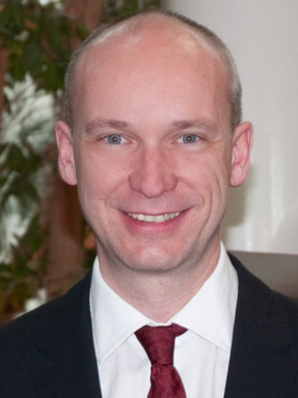
Falko Dressler (IEEE Fellow)
Professor, University of Paderborn, Germany
Title: Integrating Haptic Signals with V2X-based Safety Systems for Vulnerable Road Users
Time: 10:30-11:00, Thursday, February 20, 2020
Abstract:
We study Vehicle to Everything (V2X)-based road traffic safety systems for Vulnerable Road Users (VRUs), particularly focusing on cyclists. The development of Advanced Driver Assistance Systems (ADAS) is usually first done with the help of computer simulation. For VRUs, this lacks suitable mobility models. Furthermore, real-world experimentation is often infeasible due to the immediate danger the test participants would be put into. As a solution, we propose a human-in-the-loop approach. We extended our Virtual Cycling Environment (VCE) to integrate a variety of signals to inform a cyclist riding a real bike on a training stand in a simulated 3D traffic scenario. A particular focus was put on haptic signals, which seem to be best suitable in complex traffic situations.
Biography:
Falko Dressler is Full Professor for Computer Science and Chair for Distributed Embedded Systems at the Heinz Nixdorf Institute and the Dept. of Computer Science, University of Paderborn, where he is also a member of the University Senate. Before moving to Paderborn, he was a Full Professor at the Institute of Computer Science, University of Innsbruck and an Assistant Professor at the Dept. of Computer Science, University of Erlangen. Dr. Dressler received his M.Sc. and Ph.D. degrees from the Dept. of Computer Science, University of Erlangen in 1998 and 2003, respectively. He is associate editor-in-chief for Elsevier Computer Communications as well as an editor for journals such as IEEE Trans. on Mobile Computing, Elsevier Ad Hoc Networks, and Elsevier Nano Communication Networks. He has been guest editor of special issues in IEEE Journal on Selected Areas in Communications (JSAC), IEEE Communications Magazine, Elsevier Ad Hoc Networks, and many others. Dr. Dressler has been chairing conferences such as IEEE INFOCOM, ACM MobiSys, ACM MobiHoc, IEEE VNC, IEEE GLOBECOM, and many others. He authored the textbooks Self-Organization in Sensor and Actor Networks published by Wiley & Sons and Vehicular Networking published by Cambridge University Press. Dr. Dressler has been an IEEE Distinguished Lecturer as well as an ACM Distinguished Speaker.
Dr. Dressler is an IEEE Fellow (COMSOC, CS, VTS) as well as a Senior Member of ACM (SIGMOBILE), and member of GI (GIBU, KuVS). He also serves in the IEEE COMSOC Conference Council. His research objectives include adaptive wireless networking, self-organization techniques, and embedded system design with applications in ad hoc and sensor networks, vehicular networks, industrial wireless networks, and nano-networking.

Schahram Dustdar (member of Academia Europaea, IEEE Fellow)
Professor, TU Wien, Austria
Title: Edge Intelligence - Edge Computing and Artificial Intelligence
Time: 16:00-16:30, Tuesday, February 18, 2020
Abstract:
With the advent of Edge Computing and the coming of age of Artificial Intelligence, there is a strong demand to integrate Edge Computing and AI, which gives birth to Edge Intelligence. In this article, we divide Edge Intelligence into AI for Edge (Intelligence-enabled Edge Computing) and AI on Edge (Artificial Intelligence on Edge). In this talk we will discuss on giving insights into this new inter-disciplinary field
from a broader vision and perspective. We discuss the core
concepts and the research roadmap, which should provide the
necessary background for potential future research programs in
Edge Intelligence.
Biography:
Schahram Dustdar is Professor of Computer Science heading the Distributed Systems Group at the Technical University of Vienna. From 2004-2010 he was also Honorary Professor of Information Systems at the Department of Computing Science at the University of Groningen (RuG), The Netherlands. From 1999 - 2007 he worked as the co-founder and chief scientist of Caramba Labs Software AG in Vienna (acquired by Engineering NetWorld AG), a venture capital co-funded software company focused on software for collaborative processes in teams. Caramba Labs was nominated for several (international and national) awards: World Technology Award in the category of Software (2001); Top-Startup companies in Austria (Cap Gemini Ernst & Young) (2002); MERCUR Innovationspreis der Wirtschaftskammer (2002).
From Dec 2016 until Jan 2017 he was a Visiting Professor at the University of Sevilla, Spain and from January until June 2017 he was a Visiting Professor at UC Berkeley, USA. He is co-Editor-in-Chief of the new ACM Transactions on the Internet of Things as well as Editor-in-Chief of Computing (Springer). He is an Associate Editor of IEEE Transactions on Services Computing, IEEE Transactions on Cloud Computing, ACM Transactions on the Web, and ACM Transactions on Internet Technology, as well as on the editorial board of IEEE Internet Computing and IEEE Computer. Dustdar is recipient of the ACM Distinguished Scientist award (2009), the IBM Faculty Award (2012), an elected member of the Academia Europaea: The Academy of Europe, where he is chairman of the Informatics Section, as well as an IEEE Fellow (2016).
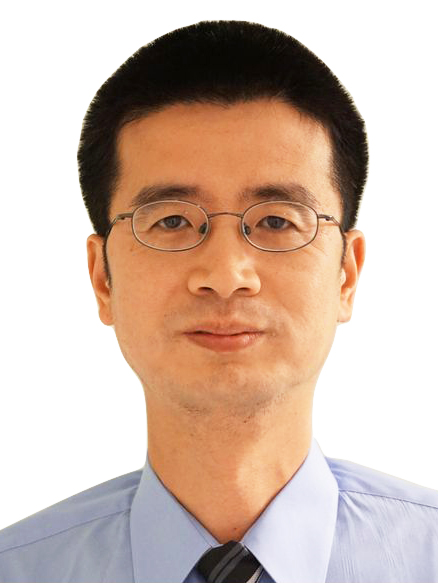
Xinwen Fu
Professor, University of Massachusetts Lowell
Title: A Unified End-to-end View of IoT Security and Privacy
Time: 17:00-17:30, Tuesday, February 18, 2020
Abstract:
In this talk, we present a unified end-to-end view of IoT security and privacy and case studies. First, we present our end-to-end view of an IoT system and this view can guide risk assessment and design of an IoT system. Based on this view, we systematically present security and privacy requirements in terms of IoT system, software, networking and big data analytics in the cloud. Second, using the end-to-end view of IoT security and privacy, we present case studies of a variety of IoT systems and CPS (cyber physical system).
Biography:
Dr. Xinwen Fu is a Professor in the Department of Computer Science, University of Massachusetts Lowell. He was a tenured Associate Professor at University of Central Florida from 2017 to 2019. Dr. Fu's current research interests are in computer and network security and privacy and digital forensics. Dr. Fu has been publishing papers in conferences such as IEEE Symposium on Security and Privacy (S&P), ACM Conference on Computer and Communications Security (CCS), Network and Distributed System Security Symposium (NDSS), ACM International Symposium on Mobile Ad Hoc Networking and Computing (MobiHoc), ACM Sensys (ACM Conference on Embedded Networked Sensor Systems), IEEE International Conference on Computer Communications (INFOCOM), journals such as ACM/IEEE Transactions on Networking (ToN), IEEE Transactions on Dependable and Secure Computing (TDSC). He spoke at various technical security conferences including Black Hat. His research is supported by NSF and NSA.
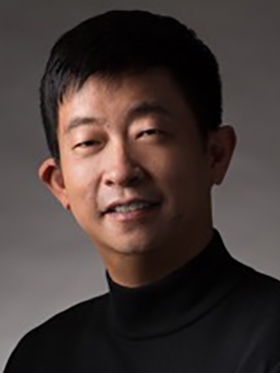
Zhu Han (IEEE Fellow)
John and Rebecca Moores Professor, University of Houston, USA
Title: UAV Applications over Cellular Networks: Sensing, Communication, and Control
Time: 16:00 - 16:30, Wednesday, February 19, 2020
Abstract:
The emerging unmanned aerial vehicles (UAVs) have been playing an increasing role in the military, public, and civil applications. Very recently, 3GPP has approved the study item on enhanced support to seamlessly integrate UAVs into future cellular networks. Unlike terrestrial cellular networks, UAV communications have many distinctive features such as high dynamic network topologies and weakly connected communication links. In addition, they still suffer from some practical constraints such as battery power, no-fly zone, etc. As such, many standards, protocols, and design methodologies used in terrestrial wireless networks are not directly applicable to airborne communication networks. Therefore, it is essential to develop new communication, signal processing, and optimization techniques in support of the ultra-reliable and real-time sensing applications, but enabling high data-rate transmissions to assist the terrestrial communications in LTE. In this talk, we discuss three scenarios: First, for UAV sensing applications, we obtain realtime profiling of fine-grained air quality index distribution using sparse optimization techniques. Second, for UAV communication scenarios, we conduct spectrum sharing planning for UAV relaying systems to enhance 5G communications. Finally, to control a large number of UAVs, we propose mean field game approaches.
Biography:
Zhu Han received the B.S. degree in electronic engineering from Tsinghua University, in 1997, and the M.S. and Ph.D. degrees in electrical engineering from the University of Maryland, College Park, in 1999 and 2003, respectively. From 2000 to 2002, he was an R&D Engineer of JDSU, Germantown, Maryland. From 2003 to 2006, he was a Research Associate at the University of Maryland. From 2006 to 2008, he was an assistant professor in Boise State University, Idaho. Currently, he is a John and Rebecca Moores Professor in Electrical and Computer Engineering Department as well as Computer Science Department at University of Houston, Texas. His research interests include security, wireless resource allocation and management, wireless communications and networking, game theory, and wireless multimedia. Dr. Han is an NSF CAREER award recipient 2010. Dr. Han has several IEEE conference best paper awards, and winner of 2011 IEEE Fred W. Ellersick Prize, 2015 EURASIP Best Paper Award for the Journal on Advances in Signal Processing and 2016 IEEE Leonard G. Abraham Prize in the field of Communications Systems (Best Paper Award for IEEE Journal on Selected Areas on Communications). Dr. Han has been IEEE fellow since 2014, AAAS fellow since 2019 and ACM distinguished member since 2019. Dr. Han is 1% highly cited researcher according to Web of Science since 2017.
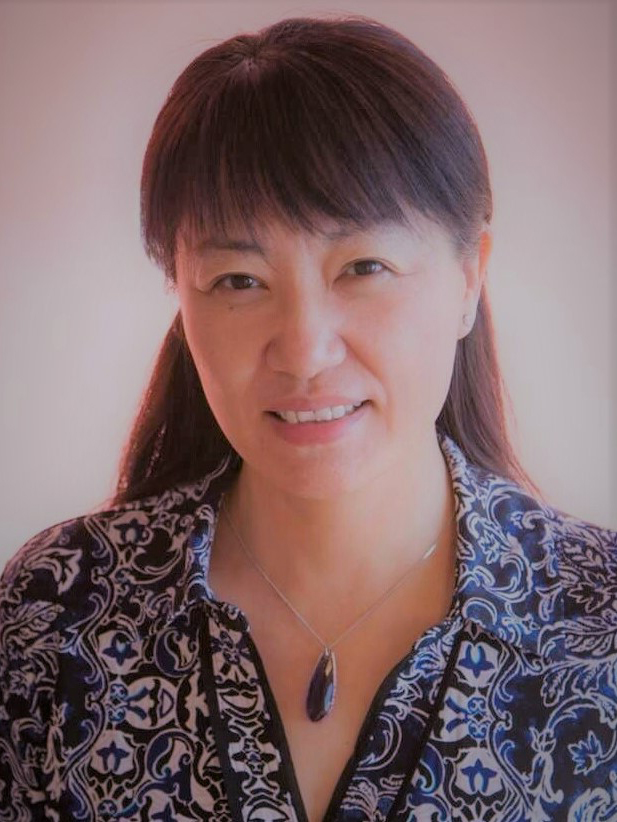
Rose Qingyang Hu (IEEE Fellow)
Professor, Utah State University, USA
Title: Machine Learning Aided Mobile Edge Computing in Blockchain Based Vehicular Networks
Time: 11:30-12:00, Tuesday, February 18, 2020
Abstract:
This work studies machine learning aided communication and computation resource allocation in the vehicular network that supports the blockchain-enabled video streaming. We aim for achieving the operating efficiency and maximizing the transcoding rewards for the blockchain networks. Moreover, the resource allocation policy is designed by considering the vehicular mobility and the hard real-time service deadline constraint. We propose to use actor-critic-reinforcement learning with the multi-timescale framework to tackle these grand challenges in this work. We also develop the prediction model for the vehicular mobility by using semantic analysis and the classical machine learning mechanism, which alleviates the heavy signaling and computation overheads due to the vehicular movement. We furthermore devise the mobility-aware reward estimation for the large timescale model to mitigate the complexity due to the large action space. Numerical results are presented to illustrate the theoretical findings developed in this research r and to quantify the performance gains attained.
Biography:
Prof. Rose Qingyang Hu is currently associate dean for research of College of Engineering and full professor of Electrical and Computer Engineering Department at Utah State University. She received
her B.S. degree from University of Science and Technology of China, her M.S. degree from New York University, and her Ph.D. degree from the University of Kansas. Besides 10 years' academia research exp
erience, Prof. Hu also has more than 10 years R&D experience with Nortel, Blackberry and Intel as technical manager, senior research scientist, and senior wireless system architect, actively participat
ing in industrial 3G/4G technology development, standardization, system level simulation and performance evaluation. Her current research interests include next-generation wireless communications, wirel
ess network design and optimization, Internet of Things, Cloud computing/Fog computing, multimedia QoS/QoE, wireless system modeling and performance analysis. She has published more than 200 papers in t
op IEEE journals and conferences and holds over 30 patents in her research areas. Prof. Hu is an IEEE Communications Society Distinguished Lecturer 2015-2018 and recipient of Best Paper Awards from IE
EE Globecom 2012, IEEE ICC 2015, IEEE VTC Spring 2016, and IEEE ICC 2016. She served as Tchnology, IEEE Communications Magazine, IEEE Wireless Communications Magazine.
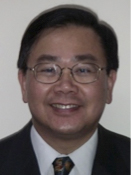
Victor C.M. Leung (IEEE/RSC/EIC/CAE Fellow)
TELUS Mobility Research Chair Professor, The University of British Columbia, Canada
Title: AIoT as a Service - Opportunities and Challenges
Time: 16:30-17:00, Tuesday, February 18, 2020
Abstract:
With the increasing adoption of Internet of Things (IoT) and rapid advancements of Artificial Intelligence (AI) applications, the integration of AI and IoT, widely referred as AIoT, is gaining momentum. Realizing AIoT will require massive investments in infrastructure, and lessons learned from network deployments point to the use of shared hardware and software resources that can be virtualized to support various services on demand, thus AIoT-as-a-Service (AIoTaaS). In this talk, we start with a review of the idea of Anything-as-a-Service (XaaS), leading to IoTaaS and AIaaS, which form the basis of AIoTaaS. We present a framework for AIoTaaS, which incorporate edge and cloud computing platforms to support the AI functionalities required for different services. Enabled by cloud and edge computing, AIoTaaS can effectively implement machine learning (ML) training and inference functions on cloud and edge devices with much less complexity to enable efficient and effective AI decision making in IoT and data analytics, especially in the area of streaming data and real-time analytics associated with edge computing networks. To implement AIoTaaS, interoperability between components at the device level, software level and platform level should be extended while optimizing system and network operations as well as extracting value from data. In the future, AIoTaaS integrated with 5G and blockchain will be leveraged to achieve more efficient IoT operations, improve human-machine interactions and enhance data management and analytics, creating a foundation for pervasive AI services and applications.
Biography:
Victor C. M. Leung is a Distinguished Professor of Computer Science and Software Engineering at Shenzhen University. He was a Professor of Electrical and Computer Engineering and holder of the TELUS Mobility Research Chair at the University of British Columbia (UBC) before he became an Emeritus Professor at UBC in 2019. His research is in the broad areas of wireless networks and mobile systems, in which he has co-authored more than 1300 refereed journal/conference papers. Dr. Leung is serving on the editorial boards of the IEEE Transactions on Green Communications and Networking, IEEE Transactions on Cloud Computing, IEEE Network, IEEE Access, and several other journals. He received the IEEE Vancouver Section Centennial Award, the 2011 UBC Killam Research Prize, the 2017 Canadian Award for Telecommunications Research, the 2018 IEEE TCGCC Distinguished Technical Achievement Recognition Award, and the 2018 MSWiM Reginald Fessenden Award. He co-authored papers that won the 2017 IEEE ComSoc Fred W. Ellersick Prize, the 2017 IEEE Systems Journal Best Paper Award, the 2018 IEEE CSIM Best Journal Paper Award, and the 2019 IEEE TCGCC Best Journal Paper Award. His name is included in the current Clarivate Analytics list of “Highly Cited Researchers”. He is a Fellow of IEEE, the Royal Society of Canada, the Canadian Academy of Engineering and the Engineering Institute of Canada.
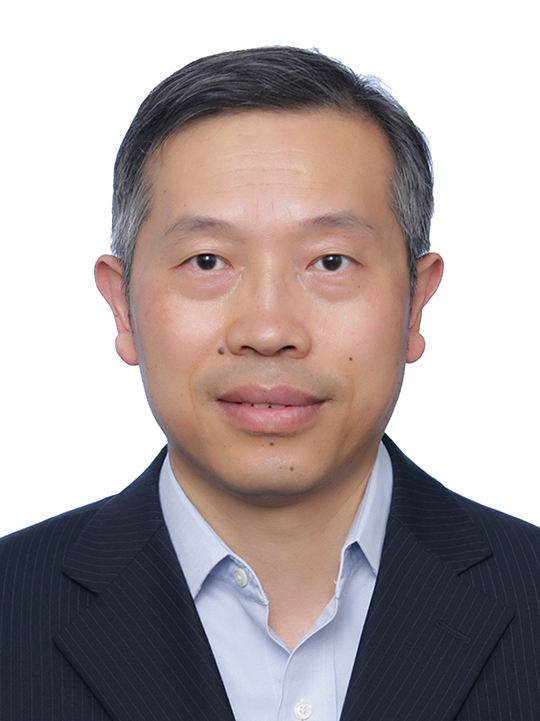
Hui Li
Professor, Xidian University, China
Title: Evaluating Location Trace Privacy and Aggregation-based Location Privacy based on Information Theoretic Metrics
Time: 11:00-11:30, Thursday, February 20, 2020
Abstract
The goal of privacy metrics is to quantify the amount of protection offered by privacy-enhancing technologies. Therefore, location privacy metrics contribute to improving user’s location privacy in location-based services. This talk will explore the problem of protecting individual user’s location privacy at the trace-level and study the privacy-utility trade-off based on information theoretic metrics. In addition, it will also present recent research about how to measure the privacy leakage when releasing noisy location aggregates and design a mechanism to minimize the leakage.
Biography:
Hui Li, received B.Sc. degree from Fudan University in 1990, M.Sc. and Ph.D. degrees from xidian University in 1993 and 1998. In 2009, he was with Department of ECE, University of Waterloo as a visiting scholar. Since 2005, he has been the professor in Xidian University, China. Now, he is the executive dean of School of Cyber Engineering. His research interests are in the areas of cryptography, wireless network security, privacy preservation, and information theory . He has published over 160 papers in academic journals and conferences. He served as chair of ACM SIGSAC China chapter.

Ying-Dar Lin (IEEE Fellow)
Distinguished Professor, National Chiao Tung University, Taiwan
Title: 5G Mobile Edge Computing: Research Roadmap on Routing, Offloading, Slicing, Federation, and Optimization
Time: 17:00-17:30, Tuesday, February 18, 2020
Abstract
5G promises to deliver enhanced mobile broadband (eMBB), massive machine type communication (mMTC), and ultra reliable low latency communication (URLLC). To support mMTC and URLLC, 5G needs to carry out computations closer to subscribers at the “edge” instead of the cloud, which turns 5G into an infrastructure for both communication and computing. Just like cloud computing, edge computing shall also be virtualized. On the other hand, communication is also being virtualized with software defined networking (SDN) and network function virtualization (NFV) which virtualize control plane and data plane, respectively. When applied to 5G, together they virtualize functions in access and core networks, and release them to run on any virtualized computing platform. Combining virtualization needs in edge computing and communication, 5G mobile edge computing (MEC) is virtualizing eNB (evolved node B), EPC (evolved packet core), and CO (central office) into VeNB, vEPC, and CORD (central office re-architected as a datacenter). They are not just communication devices anymore, but also serve as computing datacenters with many open source resources like OpenDaylight and OpenStack. After streamline the above evolution path, we then give an overview of research roadmap on 5 key components, including service chain routing, multi-RAT offloading, multi-tenant slicing, horizontal and vertical federation, and capacity optimization. Selected results are then presented.
Biography:
YING-DAR LIN is a Distinguished Professor of computer science at National Chiao Tung University (NCTU), Taiwan. He received his Ph.D. in computer science from the University of California at Los Angeles (UCLA) in 1993. He was a visiting scholar at Cisco Systems, San Jose, during 2007–2008, CEO at Telecom Technology Center, Taiwan, during 2010-2011, and Vice President of National Applied Research Labs (NARLabs), Taiwan, during 2017-2018. Since 2002, he has been the founder and director of Network Benchmarking Lab (NBL, www.nbl.org.tw), which reviews network products with real traffic and has been an approved test lab of the Open Networking Foundation (ONF) since July 2014. He also cofounded L7 Networks Inc. in 2002, later acquired by D-Link Corp, and O’Prueba Inc. in 2018. His research interests include network security, wireless communications, and network softwarization. His work on multi-hop cellular was the first along this line, and has been cited over 850 times and standardized into IEEE 802.11s, IEEE 802.15.5, IEEE 802.16j, and 3GPP LTE-Advanced. He is an IEEE Fellow (class of 2013), IEEE Distinguished Lecturer (2014–2017), ONF Research Associate, and received in 2017 Research Excellence Award and K. T. Li Breakthrough Award. He has served or is serving on the editorial boards of several IEEE journals and magazines, and is the Editor-in-Chief of IEEE Communications Surveys and Tutorials (COMST). He published a textbook, Computer Networks: An Open Source Approach (www.mhhe.com/lin), with Ren-Hung Hwang and Fred Baker (McGraw-Hill, 2011).
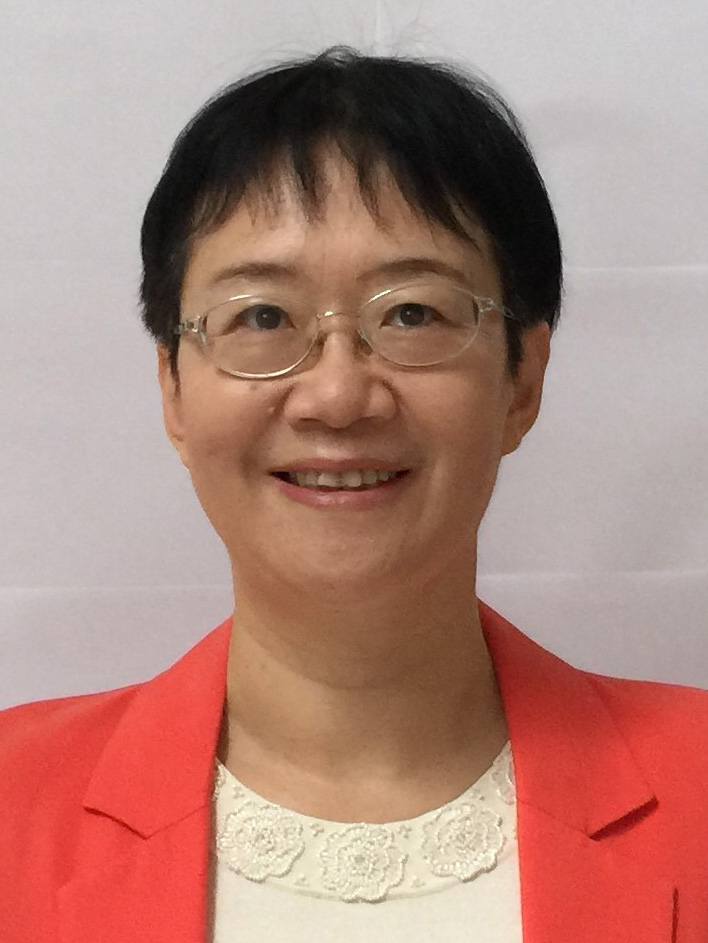
Ling Liu (IEEE Fellow)
Professor, Georgia Institute of Technology, USA.
Title: Cross-Layer Strategic Ensemble Defense Against Adversarial Examples
Time: 11:00 - 11:30, Tuessday, February 18, 2020
Abstract:
Deep neural network (DNN) has demonstrated its success in multiple domains. However, DNN models are inher- ently vulnerable to adversarial examples, which are generated by adding adversarial perturbations to benign inputs to fool the DNN model to misclassify. In this paper, we present a cross-layer strategic ensemble framework and a suite of robust defense algorithms, which are attack-independent, and capable of auto-repairing and auto-verifying the target model being attacked. Our strategic ensemble approach makes three original contributions. First, we employ input-transformation diversity to design the input-layer strategic transformation ensemble algorithms. Second, we utilize model-disagreement diversity to develop the output-layer strategic model ensemble algorithms. Finally, we create an input-output cross-layer strategic ensemble defense that strengthens the defensibility by combining diverse input transformation based model ensembles with diverse output verification model ensembles. Evaluated over 10 attacks on ImageNet dataset, we show that our strategic ensemble defense algorithms can achieve high defense success rates and are more robust with high attack prevention success rates and low benign false negative rates, compared to existing representative defenses.
Biography:
Prof. Dr. Ling Liu is a Professor in the School of Computer Science at Georgia Institute of Technology. She directs the research programs in Distributed Data Intensive Systems Lab (DiSL), examining various aspects of large-scale data intensive systems. Prof. Liu is an internationally recognized expert in the areas of Big Data Systems and Analytics, Distributed Systems, Database and Storage Systems, Internet Computing, Privacy, Security and Trust. Prof. Liu has published over 300 international journal and conference articles, and is a recipient of the best paper award from a number of top venues, including ICDCS 2003, WWW 2004, 2005 Pat Goldberg Memorial Best Paper Award, IEEE CLOUD 2012, IEEE ICWS 2013, ACM/IEEE CCGrid 2015, IEEE Edge 2017. Prof. Liu is an elected IEEE Fellow and a recipient of IEEE Computer Society Technical Achievement Award. Prof. Liu has served as general chair and PC chairs of numerous IEEE and ACM conferences in the fields of big data, cloud computing, data engineering, distributed computing, very large databases, World Wide Web, and served as the editor in chief of IEEE Transactions on Services Computing from 2013-2016. Currently Prof. Liu is co-PC chair of The Web 2019 (WWW 2019). Prof. Liu’s research is primarily sponsored by NSF, IBM and Intel.
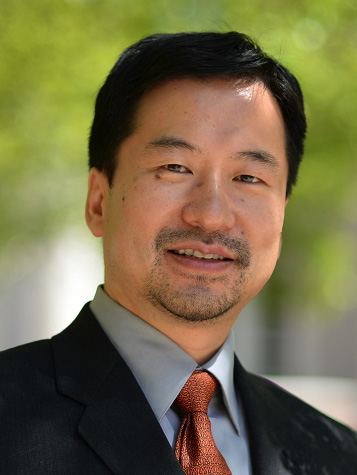
Shiwen Mao (IEEE Fellow)
Samuel Ginn Endowed Professor, Auburn University, USA
Title: RFID based Vital Sign Sensing and Its Application to Driving Fatigue Detection
Time: 16:00-16:30, Tuesday, February 18, 2020
Abstract: With the rapid development of intelligent health sensing in the Internet of Things (IoT), vital sign monitoring (e.g., respiration) and abnormal respiration detection have attracted increasing attention. Considering the challenges and the cost of collecting labeled training data from patients with breathing related diseases, we develop the AutoTag system, an unsupervised recurrent variational autoencoder-based method for respiration rate estimation and abnormal breathing detection with off-the-shelf RFID tags and reader. Moreover, for real-time breath monitoring, a novel method is proposed to cancel the distortion on measured phase values caused by channel hopping for FCC-complaint RFID systems. We will also show how to apply RFID based sensing for an effective, low-cost driving fatigue detection system, such as detecting the nodding movements or the respiration rate of the driver, both in the highly noisy driving environment. The accurate detection performance of the proposed systems is validated by our experimental study.
Biography:
Shiwen Mao received a PhD in electrical and computer engineering from Polytechnic University, Brooklyn, N.Y., in 2004. He is the Samuel Ginn Professor and Director of Wireless Engineering Research and Education Center at Auburn University, Auburn, AL. His research interests include wireless networks, multimedia communications, and smart grid. He is a recipient of several service awards from the IEEE Communications Society, several conference best paper awards, the Auburn University Creative Research & Scholarship Award in 2018, the NSF CAREER Award in 2010, and The 2004 IEEE Communications Society Leonard G. Abraham Prize in the Field of Communications Systems. He is a Fellow of the IEEE.
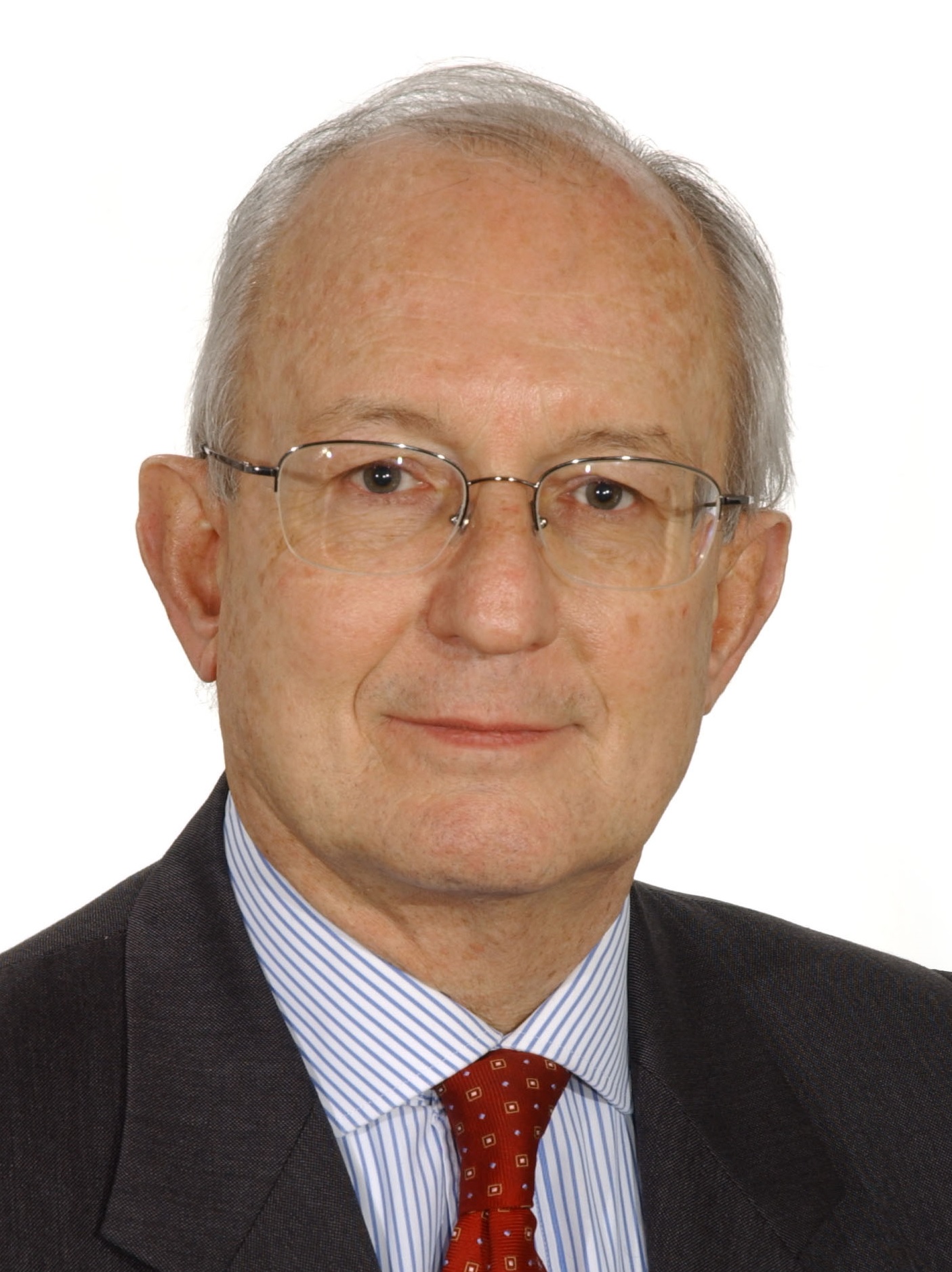
Marco Ajmone Marsan (IEEE Fellow)
Professor, Politecnico di Torino, Italy
Title: Effective Use of Small Cells in Heterogeneous Radio Access Networks
Time: 11:00-11:30, Tuesday, February 18, 2020
Abstract:
In this talk we discuss some very simple Radio Access Network configurations comprising one macro cell and one or two small cells, the latter being strategically positioned to absorb the traffic peaks that occur in portions of the area covered by the macro cell. We study these configurations with simple models, and we examine the system performance for variable parameter values, showing that some of the emerging behaviors can be critical, but can provide insight for the small cell deployment. In particular, we show that when the handover rate out of the small cells toward the macro cell increases, the blocking probability in the macro cell also increases, quickly reaching unacceptable levels. This can be a problem, since high handover rates correspond to limited dimensions of the small cell with respect to the macro cell, which is what is normally expected, unless the small cell is deployed in an area of very slow end user mobility.
Biography:
Marco Ajmone Marsan is a full professor at the Electronics and Telecommunications Department of the Politecnico di Torino in Italy, and a part-time research professor at IMDEA Networks Institute in Leganes, Spain.
Marco Ajmone Marsan obtained degrees in EE from the Politecnico di Torino in 1974 and the University of California, Los Angeles (UCLA) in 1978. He received a honorary doctoral degree in Telecommunication Networks from the Budapest University of Technology and Economics in 2002.
Since 1974 he has been at Politecnico di Torino, in the different roles of an academic career, with an interruption from 1987 to 1990, when he was a full professor at the Computer Science Department of the University of Milan.
Marco Ajmone Marsan has been doing research in the fields of digital transmission, distributed systems and networking. He has published over 350 papers in the leading conferences and journals of his research area. He is also coauthor of two books: Performance Models of Multiprocessor Systems (MIT Press, 1987) and Modelling with Generalized Stochastic Petri Nets (John Wiley, 1995).
Marco Ajmone Marsan has been a member of the editorial board and of the steering committee of the “ACM/IEEE Transactions on Networking”. He is a member of the editorial boards of the journals “Computer Networks” and “Performance Evaluation” of Elsevier, and of the “ACM Transactions on Modeling and Performance Evaluation of Computer Systems”. He served in the organizing committee of several leading networking conferences, and he was general chair of INFOCOM 2013. Marco Ajmone Marsan is a Fellow of the IEEE, a member of the Academy of Sciences of Torino, and a member of Academia Europaea. He was qualified as “ISI highly cited researcher” in computer science.
Marco Ajmone Marsan was the Vice-Rector for Research, Innovation and Technology Transfer at the Politecnico di Torino from 2005 to 2009. From 2002 to 2009 he was the Director of the Istituto di Elettronica e Ingegneria dell’Informazione e delle Telecomunicazioni of the Italian National Research Council. He was the Italian delegate in the ICT and IDEAS committees of FP7.
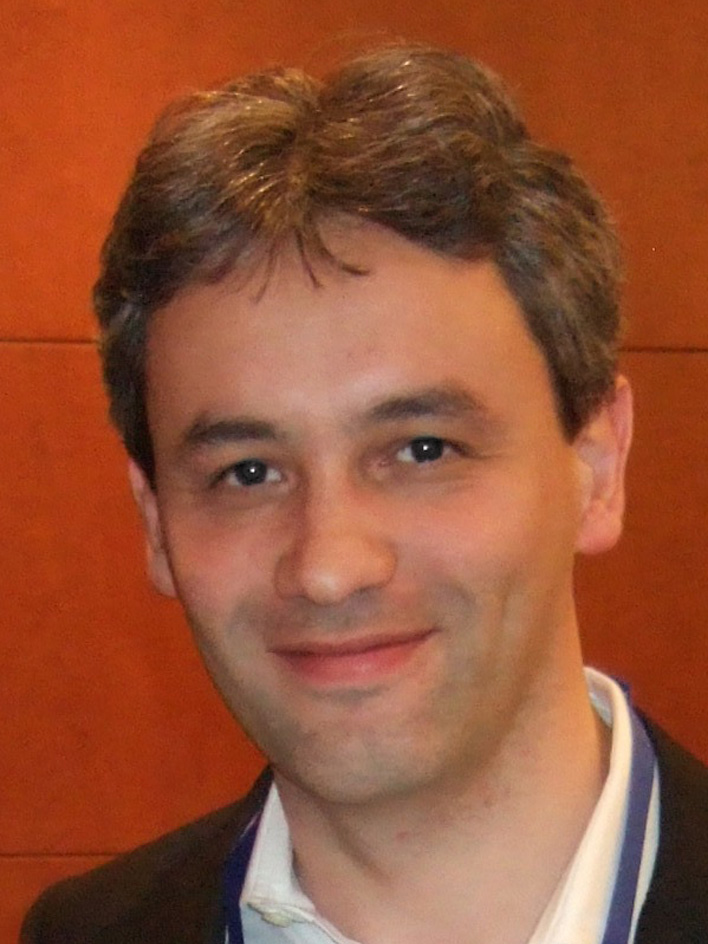
Tommaso Melodia (IEEE Fellow)
William Lincoln Smith Professor, Northeastern University, USA
Title: Toward a unified framework for wireless network slicing
Time: 11:30-12:00, Tuesday, February 18, 2020
Abstract:
Biography:
Tommaso Melodia is the William Lincoln Smith Professor with the Department of Electrical and Computer Engineering and College of Engineering Faculty Fellow at Northeastern University in Boston. He received his Ph.D. in Electrical and Computer Engineering from the Georgia Institute of Technology in 2007. He is an IEEE Fellow, a recipient of the National Science Foundation CAREER award and of the 2018 Søren Buus Outstanding Research Award.
He is the Director of Research for the PAWR Project Office, a $100M public-private partnership to establish 4 city-scale platforms for wireless research to advance the US wireless ecosystem in years to come. He was the Technical Program Committee Chair for IEEE Infocom 2018, and serves in the Editorial Boards of IEEE Transactions on Mobile Computing and IEEE Transactions on Biological, Molecular, and Multi-Scale Communications. His research on modeling, optimization, and experimental evaluation of Internet-of-Things and wireless networked systems is funded by the National Science Foundation, the Office of Naval Research, the Air Force Research Laboratory, DARPA, and the Army Research Laboratory.
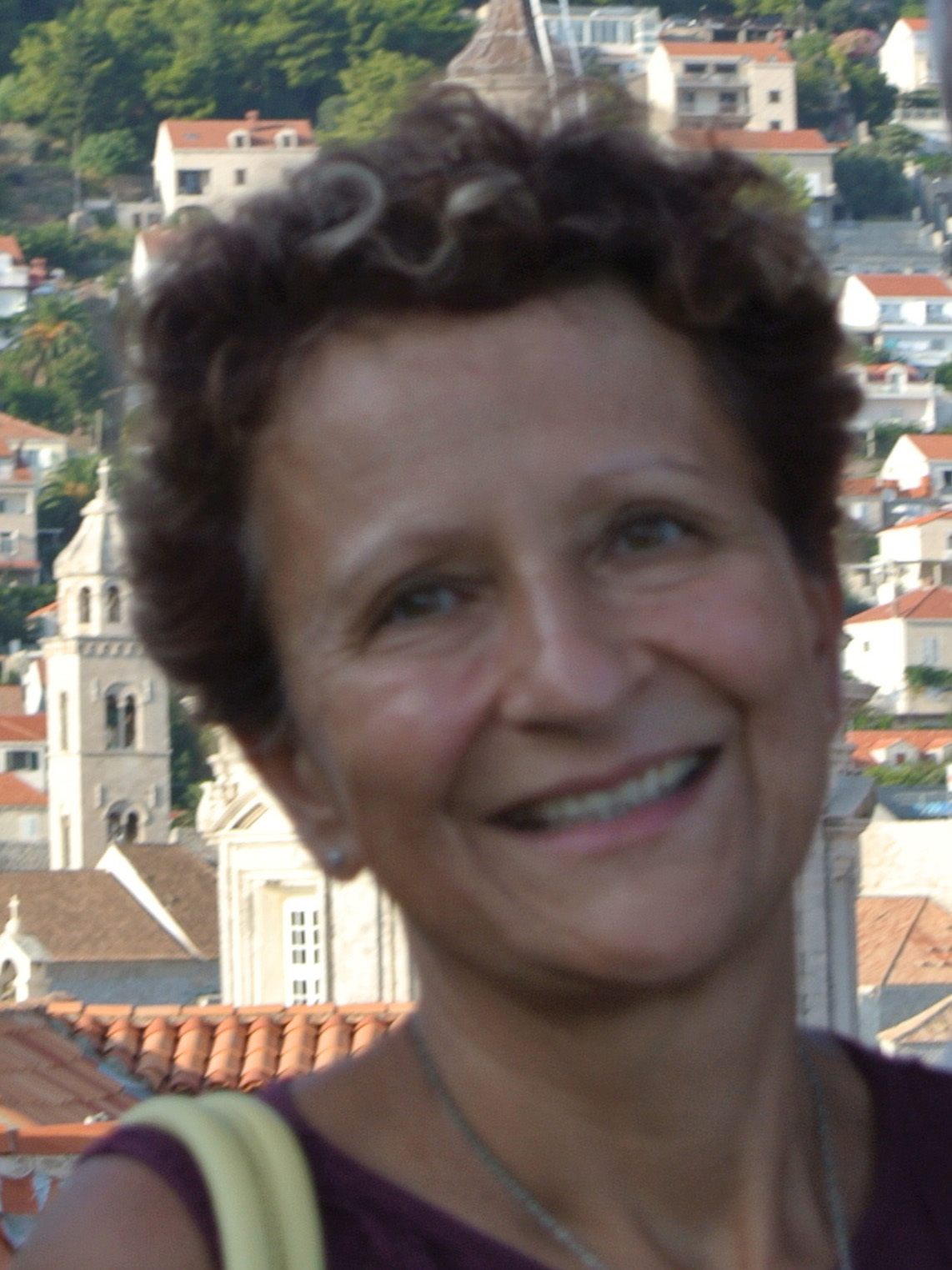
Jelena Misic (IEEE Fellow)
Professor, Ryerson University, Canada
Title: P2P network issues in a blockchain-based ledger
Time: 16:30-17:00, Wednesday, February 19, 2020
Abstract:
Interconnection network and its performance have a major impact on the performance of blockchain-based distributed ledgers. In this talk, we present a brief overview of the Bitcoin's blockchain distribution network, followed by a model of the data distribution algorithm, and some
performance results pertaining to block and transaction propagation times, fork probability, network partitioning in case of a fork event,
and duration of the inconsistent state of the ledger. Values of individual model parameters are derived from recent measurements and
business analysis reports. We model the data distribution algorithm using branching processes in the network with random distribution of
node connectivity. Then we apply Jackson network model to the entire network in which individual nodes operate as priority M/G/1 queuing
systems. Data arrival to the nodes is modeled as a non-homogeneous Poisson process where the distribution of arrival rate to the nodes is
derived from the analytical model of data delivery protocol. We show that the three-way forking probability is substantially lower than
that of a two-way forking and that the partition sizes in the case of two-way forking tend to equalize when the number of nodes increases.
We also show that the duration of ledger inconsistency state exhibits long tail probability distribution which means that successive forking
events can force the ledger to remain inconsistent for a long time.
Biography:
Dr. Misic received her PhD degree in Computer Engineering in 1993, from School of Electrical Engineering, University of Belgrade, Yugoslavia. She is professor at department of Computer science at Ryerson University. From 2003 to 2009 she was with University of Manitoba. From 1995 till 2003 she was with Hong Kong University of Science and Technology. She is Fellow of IEEE and distinguished lecturer of IEEE Vehicular Technology Society.
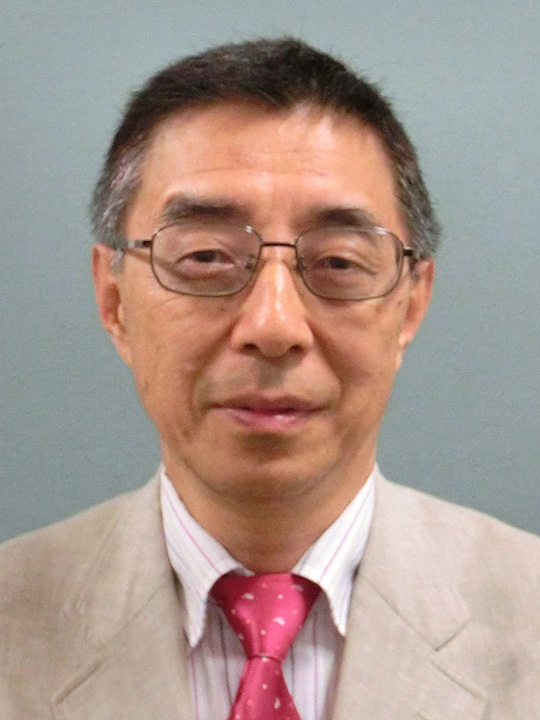
Takehiro Moriya (IEEE/IEICE/NTT Fellow)
Head of Moriya Research Lab, NTT Communication Science Labs, Japan
Title: 3GPP IVAS: standardization and applications to 5G and fixed network
Time: 16:30-17:00, Thursday, February 20, 2020
Abstract:
After successful deployment of 3GPP EVS (Enhanced Voice Services) to mobile
network in the world, 3GPP SA4 has started standardization of a new speech
coding as IVAS (EVS extension for Immersive Voice and Audio Services).
The standardization activities and potential applications of IVAS will be briefly
explained. In particular, interoperability issue will be focused in this talk.
This will be a challenge to enable high-quality conversation over 4G, 5G, and fixed
network by using flexible use of IVAS to avoid tandem connections.
Biography:
Takehiro Moriya received the B.S., M.S., and Ph.D. degrees in mathematical engineering and instrumentation physics from the University of Tokyo, in 1978, 1980, and 1989, respectively. Since joining NTT laboratories in 1980, he has been engaged in research on medium to low bit rate speech and audio coding. In 1989, he worked at AT&T Bell Laboratories as a Visiting Researcher. Since 1990 he has contributed to the standardization of coding schemes for the Japanese cellular phone, ITU-T, ISO/IEC MPEG, and 3GPP. His many inventions include the pitch synchronous innovation scheme and the conjugate vector quantization. Both have been adopted to PSI-CELP (Pitch Synchronous Innovation Code Excited LP) in the Half-rate Japanese Public Digital Cellular phone standard and to CS-ACELP (Conjugate Structure Algebraic CELP) in ITU-T G.729 standard. His team also made a principal leadership in establishing MPEG audio lossless coding (ALS), and contributed to establish 3GPP EVS.
He is a member of the Speech and Language processing Technical Committee of the IEEE Signal Processing Society. He and his colleagues have published over 200 journal or major conference papers, 16 book contributions, 80 families of international patents and 320 families of Japanese patents. He received many awards, including the purple ribbon award from Japanese government in 2010, Distinguished Achievement and Contributions Award from IEICE Japan in 2012, and IEEE James L. Flanagan Speech and Audio Processing Award in 2016.

Eiji Oki (IEEE/IEICE Fellow)
Professor, Kyoto University, Japan
Title: Resource Allocation in Middleboxes
Time: 17:30-18:00, Tuesday, February 18, 2020
Abstract:
Middleboxes are network devices which provide network services including load balancers, firewalls, and intrusion detection system/intrusion prevention system in enterprise networks. Middleboxes play an important role in the network, but they may fail due to several reasons, such as hardware problems, misconfiguration, overloading and mainly connectivity errors. This talk addresses challenges of resource allocation in middleboxes by considering various aspects of survivability on network functions.
Biography:
Eiji Oki is a Professor at Kyoto University, Kyoto, Japan. He received the B.E. and M.E. degrees in instrumentation engineering and a Ph.D. degree in electrical engineering from Keio University, Yokohama, Japan, in 1991, 1993, and 1999, respectively. In 1993, he joined Nippon Telegraph and Telephone Corporation (NTT) Communication Switching Laboratories, Tokyo, Japan. He has been researching network design and control, traffic-control methods, and high-speed switching systems. From 2000 to 2001, he was a Visiting Scholar at the Polytechnic Institute of New York University, Brooklyn, New York, where he was involved in designing terabit switch/router systems. He was engaged in researching and developing high-speed optical IP backbone networks with NTT Laboratories. He was with The University of Electro-Communications, Tokyo, Japan from July 2008 to February 2017. He joined Kyoto University, Japan in March 2017. He has been active in the standardization of the path computation element (PCE) and GMPLS in the IETF. He wrote more than ten IETF RFCs. Prof. Oki was the recipient of several prestigious awards, including the 1998 Switching System Research Award and the 1999 Excellent Paper Award presented by IEICE, the 2001 Asia-Pacific Outstanding Young Researcher Award presented by IEEE Communications Society for his contributions to broadband network, ATM, and optical IP technologies, the 2010 Telecom System Technology Prize by the Telecommunications Advanced Foundation, IEEE HPSR 2012 Outstanding Paper Award, IEEE HPSR 2014 Best Paper Award Finalist, First Runner Up, and the 2015 IEICE Achievement Award. He has authored/co-authored four books, Broadband Packet Switching Technologies, published by John Wiley, New York, in 2001, GMPLS Technologies, published by CRC Press, Boca Raton, FL, in 2005, Advanced Internet Protocols, Services, and Applications, published by Wiley, New York, in 2012, and Linear Programming and Algorithms for Communication Networks, CRC Press, Boca Raton, FL, in 2012. He is a Fellow of IEEE and IEICE.

Panos Nasiopoulos (IEEE/CAE Fellow)
Professor, University of British Columbia, Canada
Title: A Quest for the perfect picture: Recreating the “Holodeck”
Time: 13:30-14:00, Thursday, February 20, 2020
Abstract:
Light is crucial to our ability to perceive and successfully interact with our environment. As rays of light reach our eyes from every possible direction, either directly from the source or reflected off of objects and surfaces, they excite our visual system, which translates them to spatial, temporal, textural/colour-gamut information.
Conventional visual capturing technologies are unable to fully acquire these properties, necessary to mimic human perception. In particular, traditional technologies have been limited to capturing only the sum total intensity of light rays striking every point in the targeted space. This is far from the visual world as perceived by humans, as we need somehow to capture light intensity and direction as well as the exact placement of every point in space along with other relevant visual and situational cues.
In this talk, we will discuss ways for acquiring human-like visual data that may allow ultimate replication of our visual environment, closely mimicking human perception. Then we will examine how such information can drastically affect domains that depend heavily on visual acquisition technologies, such as entertainment/education & training, autonomous driving, highly immersive Virtual Reality (VR) and Augmented Reality (AR) & gaming education/training, Digital health and wellness.
Biography:
Dr. Panos Nasiopoulos is a professor with the Department of Electrical and Computer Engineering and the former Director of the Institute for Computing, Information and Cognitive Systems and the Master of Software Systems at UBC. Before joining UBC, he was the President of Daikin Comtec US (co-founder of DVD) and Executive Vice President of Sonic Solutions. His research interests are primarily in the area of Digital Video Processing and Coding, he is the author or the co-author of numerous research publications and patents. He is a registered member of the Association of Professional Engineers and Geoscientists of British Columbia (APEGBC), a Fellow of IEEE, a Fellow of the Canadian Academy of Engineering, and has been an active member of the Standards Council of Canada, MPEG, JPEG, SMPTE and IEEE.
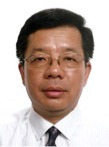
Yi Qian (IEEE Fellow)
Professor, University of Nebraska-Lincoln, USA.
Title: Smart Service-Aware Wireless Networks
Time: 10:30 - 11:00, Tuesday, February 18, 2020
Abstract:
Smart services such as smart home, smart grid, smart transportation, and so on, are enabled with advanced communications networks, data analysis and control. However, challenges exist in designing a supporting network with optimal resource management while achieving quality- of-experience for a smart service. In this talk, we present a unified Smart Service-Aware Wireless Mixed-Area Networks (SA-WMN) architecture that can be applied to different smart services. The core of the SA-WMN architecture is a smart service-aware network controller. The mega network controller has a service adaptation module, network cognition module and resource provisioning module that can achieve cost-effective wireless-mixed area network deployment, and efficient network resource management of SA-WMN. The proposed SA-WMN architecture is expected to close the gap on wireless network design, improve energy efficiency and enhance spectrum efficiency and access, in a smart service- aware paradigm. It will pave the way for realizing next-generation wireless network based smart services.
Biography:
Yi Qian received a Ph.D. degree in electrical engineering from Clemson University, South Carolina. He is currently a professor in the Department of Electrical and Computer Engineering, University of Nebraska-Lincoln (UNL). Prior to joining UNL, he worked in the telecommunications industry, academia, and government. His research interests include wireless communication networks and systems, and information and communication network security. Prof. Yi Qian is a Fellow of IEEE. He was previously Chair of the IEEE Technical Committee for Communications and Information Security. He was the Technical Program Chair for IEEE International Conference on Communications 2018. He serves on the Editorial Boards of several international journals and magazines, including as the Editor-in-Chief for IEEE Wireless Communications. He was a Distinguished Lecturer for IEEE Vehicular Technology Society. He is currently a Distinguished Lecturer for IEEE Communications Society.
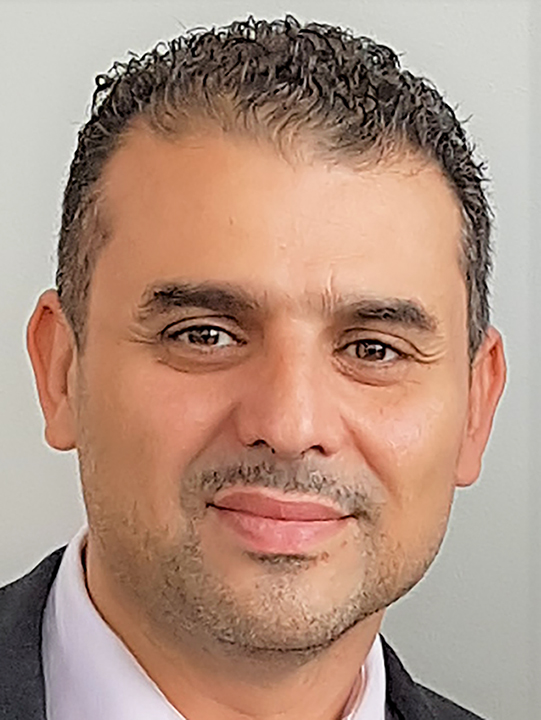
Abdulmotaleb El Saddik (IEEE/CAE Fellow)
Professor, University of Ottawa, Canada
Title: Meeting the digital Twin: Multimedia Convergence for Citizens’ Well-Being
Time: 14:00-14:30, Thursday, February 20, 2020
Abstract:
A digital twin is a digital replication of a living or non-living physical entity. By bridging the physical and the virtual worlds, data is transmitted seamlessly allowing the virtual entity to exist simultaneously with the physical entity. A digital twin facilitates the means to monitor, understand, and optimize the functions of the physical entity and provides continuous feedback to improve quality of life and wellbeing of citizens in smart cities. In this talk, we will discuss the convergence of multimedia technologies (AR/VR, AI, IoT, Wearables, BigMM Data and 5G-Tactile Internet) towards the digital twin for health care. We will conclude by describing the challenges and the open research questions.
Biography:
Abdulmotaleb El Saddik (M01 SM04 F09), is Distinguished Professor and University Research Chair in the School of Electrical Engineering and Computer Science at the University of Ottawa. He completed his Dipl-Ing. and Dr.-Ing. from the Technische Universität Darmstadt, Germany. He is the director of the Multimedia Communications research Laboratory and the Medical Devices Innovation Institute. Dr. El Saddik is an internationally-recognized scholar who has made strong contributions to the knowledge and understanding of multimedia computing, communications and applications. He is a leading haptics expert, with global recognition for his development of new technologies for real-time multisensory-based identification of humans (biometrics), synchronization of haptics, audio and visual data, Quality of Experience models for multisensory environments, and methods that dynamically compute the confidence levels of sensory data in a collaborative environment. His work looks toward the establishment of Digital Twins using AI, AR/VR and Tactile Internet that allow people to interact in real-time with one another as well as with their digital representation. He has been extremely productive of high-quality research and impact. He is the author of more than 500 peer-reviewed articles and five patents. He is the author of the book Haptics Technologies: Bringing Touch to Multimedia. Dr. El Saddik is a Fellow of the IEEE, the Canadian Academy of Engineering and the Engineering Institute of Canada. He received several awards, including the Friedrich Wilhelm Bessel Award from the German Humboldt Foundation and the IEEE Instrumentation and Measurement Society Technical Achievement Award. He also received IEEE Canada C.C. Gotlieb (Computer) Medal and A.G.L. McNaughton Gold Medal for important contributions to the field of computer engineering and science.
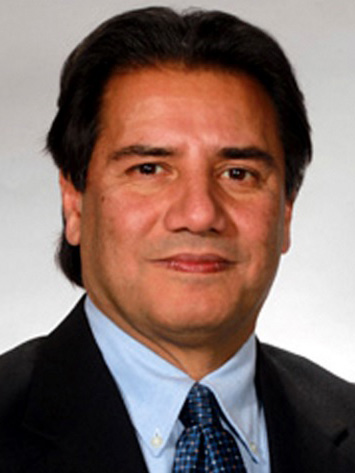
Title: Study of a Unified High-Speed Wireless Communications Architecture for High-Speed Rail Networks
Time: 17:30-18:00, Wednesday, February 19, 2020.
Abstract:
High-speed trains, though prevalent in Europe and Asia, are not yet a reality in the US. Interests and industry engagements are growing, especially around commercial hubs close to commuter homes for alleviating commute times and cost. With support from the US Federal Railroad Administration (FRA) in the Department of Transportation (DoT), Dr. Sharif’s team has explored the design requirements, challenges, and technology capabilities for high-speed wireless communications for high-speed trains using the next-generation radio access technologies. A safe, secure, efficient and seamless train operation moving underground or over at a regular or high speed (around 300 km/h) requires reliable wireless communications. The wireless communications to support in-train passenger services, train signaling and controlling services necessitate challenging considerations regarding wireless channel conditions and communications management, especially considering movement through different terrain environments (hills, flat-rural, urban-dense, etc.) and railroad infrastructure (bridges, viaduct, tunnel). These scenarios cause difficult channel conditions to manage, specifically for channel requirements for a train-to-ground Radio Access Networks. Dr. Sharif will discuss the technical challenges for this unified wireless architecture including modeling and simulations as well as insights into evaluated properties of this system.
Biography:
Dr. Hamid Sharif is an IEEE Fellow and the Charles J. Vranek Distinguished Professor in the Department of Electrical and Computer Engineering at the University of Nebraska-Lincoln (UNL). He is also the Director of Advanced Telecommunications Engineering Laboratory (TEL) at UNL. He has over 35 years of academic and industrial research experience in Mobile Communications, Intelligent Transportation, Wireless for Railroads, Network Security, Mobile Communication Security, and IoT Cooperative Communications.
He has published over 360 research articles in national and international journals and conferences and has been serving on many IEEE and other international journal’s editorial boards. He has been the recipient of a number of research awards and best papers. He is also the recipient of the prestigious Fulbright Fellowship Award in Science, Technology and Innovation in 2013. He is currently a Distinguished Lecturer for the IEEE Vehicular Technology Society.
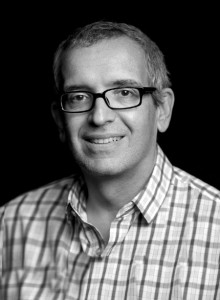
Luiz Da Silva (IEEE Fellow)
Professor of Telecommunications, Trinity College Dublin
Title: On the Connectivity of Drones to Mobile Networks
Time: 16:30-17:00, Tuesday, February 18, 2020
Abstract:
Low-flying drones have started to be deployed commercially for product delivery and are being proposed for a large number of applications, from search and rescue to the inspection of power lines. They also have the potential to augment or provide wireless service in locations of suddenly increased demand for connectivity (e.g., outdoor concerts, demonstrations, disaster sites). Our recent work explores the issue of connectivity of drones to the ground network infrastructure, as well as their potential to provide service to users on the ground. Our models employ stochastic geometry to quantify the connectivity conditions under different scenarios for the drones (flying height, directional transmission capabilities) and the ground infrastructure (density of buildings, antenna tilt). We are also exploring the use of machine learning to dynamically assess these factors and make resource management decisions in drone connectivity.
Biography:
Prof. Luiz DaSilva holds the personal chair of Telecommunications at Trinity College, where he is the Director of CONNECT, the Science Foundation Ireland research centre on telecommunications and future networks. Prior to joining TCD, Prof DaSilva was a tenured professor in the Bradley Department of Electrical and Computer Engineering at Virginia Tech. His research focuses on distributed and adaptive resource management in wireless networks, and in particular radio resource sharing and the application of game theory to wireless networks. Prof DaSilva is a Fellow of Trinity College Dublin. He is also a Fellow of the IEEE, for contributions to cognitive networks and to resource management in wireless networks.

Lee Swindlehurst (IEEE Fellow)
Professor, University of California, Irvine, USA
Title: Spatial Sigma-Delta ADCs: A Low Complexity Architecture for Massive MIMO
Time: 14:30-15:00, Thursday, February 20, 2020
Abstract:
Low-resolution sampling has been extensively studied as a method for reducing the hardware complexity of communications systems with large numbers of antennas. While one-bit quantization yields the best energy efficiency, its severe non-linearity has a significant impact on performance. Borrowing from the idea of one-bit Sigma-Delta oversampling in the temporal domain, we describe a corresponding technique in the spatial domain, in which the quantization noise is shaped away from the signal directions corresponding to users of interest. This talk discusses various aspects of the spatial Sigma-Delta architecture, including channel estimation, input amplitude scaling, impact of mutual coupling with oversampled arrays, number of bits of resolution, and performance relative to other methods. We show that for scenarios typical in cellular systems, where the users are confined to an angular sector, the one-bit Sigma-Delta approach can provide performance approaching that of a system with high-resolution ADCs, with significantly lower hardware complexity.
Biography:
A. LEE SWINDLEHURST received the B.S. and M.S. degrees in Electrical Engineering from Brigham Young University, Provo, Utah, in 1985 and 1986, respectively, and the PhD degree in Electrical Engineering from Stanford University in 1991. From 1986-1990, he was employed at ESL, Inc., of Sunnyvale, CA, where he was involved in the design of algorithms and architectures for several radar and sonar signal processing systems. He was on the faculty of the Department of Electrical and Computer Engineering at Brigham Young University from 1990-2007, where he was a Full Professor and served as Department Chair from 2003-2006. During 1996-1997, he held a joint appointment as a visiting scholar at both Uppsala University, Uppsala, Sweden, and at the Royal Institute of Technology, Stockholm, Sweden. From 2006-07, he was on leave working as Vice President of Research for ArrayComm LLC in San Jose, California. He is currently a Professor in the Electrical Engineering and Computer Science Department at the University of California Irvine (UCI), a former Associate Dean for Research and Graduate Studies in the Henry Samueli School of Engineering at UCI, and a former Hans Fischer Senior Fellow in the Institute for Advanced Studies at the Technical University of Munich.
Dr. Swindlehurst is a Fellow of the IEEE, past Editor-in-Chief of the IEEE Journal of Selected Topics in Signal Processing, and past member of the Editorial Boards for the EURASIP Journal on Wireless Communications and Networking, IEEE Signal Processing Magazine, and the IEEE Transactions on Signal Processing. He is a recipient of several paper awards: the 2000 IEEE W. R. G. Baker Prize Paper Award, the 2006 and 2010 IEEE Signal Processing Society’s Best Paper Awards, the 2006 IEEE Communications Society Stephen O. Rice Prize in the Field of Communication Theory, and the 2017 IEEE Signal Processing Society Donald G. Fink Overview Paper Award.
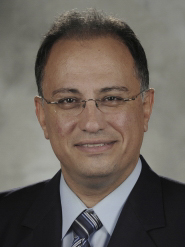
Manos M. Tentzeris (IEEE Fellow)
Ken Byers Professor, Georgia Tech, USA
Title: 4D-Printed “Zero-Power” Wireless Systems: A Quantum Leap in IoT, SmartAg and Smart Cities Applications
Time: 15:00-15:30, Thursday, February 20, 2020
Abstract:
In this talk, inkjet-/3D-printed antennas, interconnects, “smart” encapsulation and packages, RF electronics, microfluidics and sensors fabricated on glass, PET, paper and other flexible substrates are introduced as a system-level solution for ultra-low-cost mass production of Millimeter-Wave Modules for Communication, Energy Harvesting and Sensing applications. Prof. Tentzeris will touch up the state-of-the-art area of fully-integrated printable broadband wireless modules covering characterization of 3D printed materials up to E-band, novel printable “ramp” interconnects and cavities for IC embedding as well as printable structures for self-diagnostic and anti-counterfeiting packages. The presented approach could potentially set the foundation for the truly convergent wireless sensor ad-hoc networks of the future with enhanced cognitive intelligence and "rugged" packaging. Prof. Tentzeris will discuss issues concerning the power sources of "near-perpetual" RF modules, including flexible miniaturized batteries as well as power-scavenging approaches involving thermal, EM, vibration and solar energy forms. The final step of the presentation will involve examples from shape-changing 4D-printed (origami) packages, reflectarrays and mmW wearable (e.g. biomonitoring) antennas and RF modules. Special attention will be paid on the integration of ultrabroadband (Gb/sec) inkjet-printed nanotechnology-based backscattering communication modules as well as miniaturized printable wireless (e.g.CNT) sensors for Internet of Things (IoT), 5G and smart agriculture/biomonitoring applications. It has to be noted that the talk will review and present challenges for inkjet-printed organic active and nonlinear devices as well as future directions in the area of environmentally-friendly ("green") RF electronics and "smart-skin' conformal sensors.
Biography:
Professor Tentzeris was born and grew up in Piraeus, Greece. He graduated from Ionidios Model School of Piraeus in 1987 and he received the Diploma degree in Electrical Engineering and Computer Science (Magna Cum Laude) from the National Technical University in Athens, Greece, in 1992 and the M.S. and Ph.D. degrees in Electrical Engineering and Computer Science from the University of Michigan, Ann Arbor in 1993 and 1998.
He is currently a Professor with the School of ECE, Georgia Tech and he has published more than 550 papers in refereed Journals and Conference Proceedings, 4 books and 23 book chapters, while he is in the process of writing 1 book. He has served as the Head of the Electromagnetics Technical Interest Group of the School of ECE, Georgia Tech. Also, he has served as the Georgia Electronic Design Center Associate Director for RFID/Sensors research from 2006-2010 and as the GT-Packaging Research Center (NSF-ERC) Associate Director for RF research and the leader of the RF/Wireless Packaging Alliance from 2003-2006. Also, Dr. Tentzeris is the Head of the A.T.H.E.N.A. Research Group (20 students and researchers) and has established academic programs in 3D Printed RF electronics and modules, flexible electronics, origami and morphing electromagnetics, Highly Integrated/Multilayer Packaging for RF and Wireless Applications using ceramic and organic flexible materials, paper-based RFID's and sensors, inkjet-printed electronics, nanostructures for RF, wireless sensors, power scavenging and wireless power transfer, Microwave MEM's, SOP-integrated (UWB, mutliband, conformal) antennas and Adaptive Numerical Electromagnetics (FDTD, MultiResolution Algorithms). He was the 1999 Technical Program Co-Chair of the 54th ARFTG Conference and he is currently a member of the technical program committees of IEEE-IMS, IEEE-AP and IEEE-ECTC Symposia. He was the TPC Chair for the IMS 2008 Conference and the Co-Chair of the ACES 2009 Symposium. He was the Chairman for the 2005 IEEE CEM-TD Workshop. He was the Chair of IEEE-CPMT TC16 (RF Subcommittee) and he was the Chair of IEEE MTT/AP Atlanta Sections for 2003. He is a Fellow of IEEE, a member of MTT-15 Committee, an Associate Member of European Microwave Association (EuMA), a Fellow of the Electromagnetics Academy, and a member of Commission D, URSI and of the the Technical Chamber of Greece. He is the Founder and Chair of the newly formed IEEE MTT-S TC-24 (RFID Technologies). He is one of the IEEE C-RFID DIstinguished Lecturers and he has served as one IEEE MTT-Distinguished Microwave Lecturers (DML) from 2010-2012.
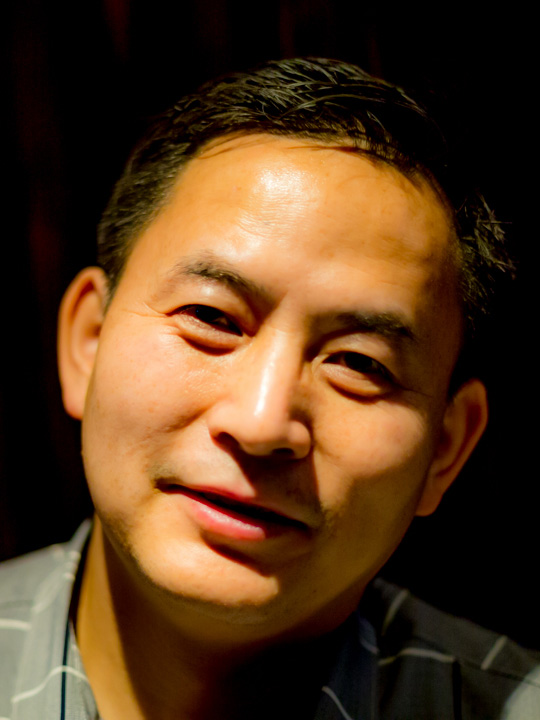
Honggang Wang (IEEE Distinguished Lecturer)
Associate Professor, UMass Dartmouth, USA
Title: Towards Smart and Secure Connected Health
Time: 17:00-17:30, Thursday, February 20, 2020
Abstract:
Connected health is the use of Internet, sensing, communications and intelligent techniques in support of healthcare applications. Wireless body area networks (WBANs) with various types of biomedical sensors is one of major infrastructures of connected health and provide an opportunity to address issues in rapidly increasing connected health applications. However, there are significant challenges in the area, such as improving the performance of WBANs, analytics of large and continuous physiological data collected from biomedical sensors and predictive modeling, and securing data transmission and protecting data privacy, especially in mobile and wireless environments. In this talk, I will introduce two case studies in the related area: (1) developing a wearable biosensor system for the remote detection of life threatening events in infants; (2) a security system to support reliable and secured data transmissions over WBANs.
Biography:
Honggang Wang is the "Scholar of The Year" (2016, only one per year at UMass Dartmouth). Before he joined UMass Dartmouth in 2009, he has worked for Bell Labs Lucent Technologies China from 2001 to 2004 as a Member of Technical Staff. He received his Ph.D. in Computer Engineering at University of Nebraska-Lincoln in 2009. He is a tenured associate professor at UMass Dartmouth and is an affiliated faculty member of Advanced Telecommunications Engineering Laboratory at University of Nebraska-Lincoln. He is also the faculty member of Biomedical Engineering and Biotechnology Ph.D. program (BMEBT) at UMass Dartmouth. His research interests include Internet of Things, Wireless Health, Body Area Networks (BAN), Cyber and Multimedia Security, Mobile Multimedia and Cloud, Wireless Networks and Cyber-physical System, and BIG DATA in mHealth. He has published more than 150 papers in his research areas. He was an invited participant by National Academic Engineering (NAE) for 2017 German-American Frontiers of Engineering Symposium, as one of about 50 outstanding engineers (ages 30-45) from US companies, universities, and government labs. He has served as the general chair/co-chair and TPC chair/co-chairs for several IEEE/ACM conferences. He also serves as the steering committee co-chair of IEEE CHASE and TPC co-chair of of IEEE CHASE 2016, which is a leading international conference in the field of connected health. He served as the TPC member for IEEE INFOCOM 2013-2015, IEEE ICDCS 2015, IEEE ICDM 2018, ACM Multimedia 2017 and area chair for IEEE ICME 2016 and 2017. He has also been serving as the Associate Editor in Chief (EiC) for IEEE Internet of Things journal (SCI impact factor: 9.5), associate editors for IEEE Transactions on Big Data, IEEE Transactions on Multimedia, an Editor of IEEE Transactions on Vehicular Technology, Associate Editor of IEEE network Magazine. He currently serves as the Vice chair of IEEE eHealth Technical Committee and the Chair of IEEE Comsoc Multimedia Communications Technical committee (IEEE MMTC). He received IEEE Multimedia Communications Technical Committee (MMTC) Outstanding Leadership Award (2015) and IEEE HEALTHCOM 2015 Outstanding Service Award. His research is supported by NSF, DoT, NIH, UMass President office, and UMass Healey Grant (total over 2M dollars). He is an IEEE distinguished lecturer.
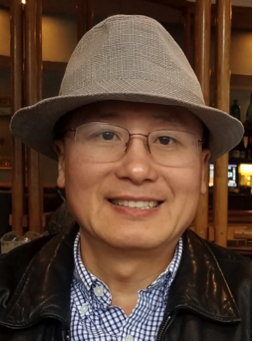
Jie Wang
Professor, University of Massachusetts, Lowell, USA
Title: AI-Assisted Text Mining and Document Engineering to Facilitate Reading for Understanding
Time: 17:00-17:30, Wednesday, February 19, 2020
Abstract:
Reading is fun, until it becomes a chore. Remember the time when we have to read a pile of research papers and make a presentation next Monday? Reading is a basic skill with three purposes: (1) Read for entertainment; (2) Read for information; (3) Read for understanding (of knowledge). Linear reading from the beginning to the end is the norm. Is there a better way to read for understanding? Let’s think outside the box and turn linear reading to hierarchical reading over a digital platform. Imagine that we have access to an oracle that ranks the sentences of the given text according to their importance, allowing us to read blocks of sentences one at a time in descending order of importance, focus on the most important block of sentences, and read subsequent blocks to strengthen understandings of earlier blocks. Moreover, the oracle also generates questions and evaluates answers. We present an AI-assisted text mining oracle to facilitate reading for understanding with the following requirements: Accurate and Efficient for the oracle and Effective for the reader. In particular, we present an sentence ranking algorithm called Semantic SentenceRank (SSR) that incorporates word and phrase co-occurrences, semantic relations over word embeddings, semantic sentence relations over word embedding mover’s distance, article structure-biased PageRank, softplus elevation, and sentence selection according to topic clustering distribution. We show that SSR outperforms individual human judges over the SummBank benchmarks and compares favorably with the combined rankings of all three judges. We will also show how to use document engineering to handle two-column pdf documents for SSR. To demonstrate efficiency and effectiveness, we will provide a live demo of the system.
Biography:
Dr. Jie “Jed” Wang joined the Department of Computer Science at the University of Massachusetts Lowell in 2001 as Full Professor, and chaired the department for 9 years from 2007 to 2016. He has been Director for greater China Partnership of the US-based Consortium for Mathematics an Its Applications (COMAP) since 2011. He was Assistant Professor of Computer Science and then Associate Professor of Computer Science at the University of North Carolina prior to joining UMass. He received a PhD in Computer Science from Boston University in 1990, an MS in Computer Science and a BS in Computational Mathematics both from Sun Yat-sen University in, respectively, 1984 and 1982. He has 30 years of teaching and research experience and has worked as a network security consultant in a national bank. His research interests include data modeling and applications, text mining and learning, text automation systems, machine learning, algorithms and combinatorial optimizations, medical computation, network security, and computational complexity theory. He has published over 180 journal and conference papers, 12 books, and 4 edited books. His research has been funded by the National Science Foundation, IBM, Intel, and other companies. He is active in professional service, including chairing conference program committees and organizing workshops, serving as journal editors and the editor-in-chief of a book series on mathematical and interdisciplinary modeling. He has graduated 18 PhD students and is currently directing 5 PhD students.
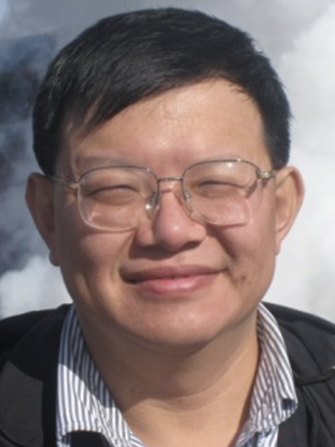
Li-Chun Wang (IEEE Fellow)
Professor and Chairman, National Chiao Tung University, Taiwan
Title: Interference Management for Future Cellular Mobile Networks: From Unsupervised Learning to Deep Reinforcement Learning
Time: 10:00-10:30, Tuesday, February 18, 2020
Abstract:
The dense deployment of small cells in 5G cellular networks and drone base station raises the issue of controlling downlink inter-cell interference and based station energy saving under time-varying channel states. In this talk, we first demonstrate that the inter-cell interference can be used to describe the affinity of cells, and then introduce an unsupervised learning algorithm for ultra-dense small cells (UDSC) based on an affinity propagation clustering approach. In principle, the proposed affinity propagation power control (APPC) first groups small cells into different clusters and identifies cluster centers. Next, the transmission power of a cluster center is decreased to reduce the interference to the neighboring cells’ users in this cluster. Secondly, we extend the proposed APPC algorithm to the scenario with drone base stations, for which energy saving is a critical issue. We find that APPC can not only control the inter-cell interference effectively, but can help save energy consumption of base stations by taking advantage of the reposition capability of drone base stations. Thirdly, we introduce two reinforcement learning approaches to suppress inter-cell interference and save energy for UDSC: Q-learning and deep reinforcement learning. Analytical convergence performance bounds, including throughput, energy consumption, inter-cell interference, and the utility of base stations are discussed. Last, we highlight the research issues that merit attention in the future development of artificial intelligence and machine learning for future cellular mobile networks.
Biography:
Li-Chun Wang (M'96 -- SM'06 -- F'11) received Ph. D. degree from the Georgia Institute of Technology, Atlanta, in 1996. From 1996 to 2000, he was with AT&T Laboratories, where he was a Senior Technical Staff Member in the Wireless Communications Research Department. Since August 2000, he has joined the Department of Electrical and Computer Engineering of National Chiao Tung University in Taiwan and is jointly appointed by Department of Computer Science and Information Engineering of the same university.
Dr. Wang was elected to the IEEE Fellow in 2011 for his contributions to cellular architectures and radio resource management in wireless networks. He won the Distinguished Research Award of National Science Council, Taiwan (2012). He was the co-recipients of IEEE Communications Society Asia-Pacific Board Best Award (2015), Y. Z. Hsu Scientific Paper Award (2013), and IEEE Jack Neubauer Best Paper Award (1997). His current research interests are in the areas of software-defined mobile networks, heterogeneous networks, and data-driven intelligent wireless communications. He holds 23 US patents, and have published over 300 journal and conference papers, and co-edited a book, “Key Technologies for 5G Wireless Systems,” (Cambridge University Press 2017).
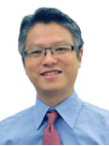
Yonggang Wen (IEEE Fellow)
Professor, Nanyang Technological University (NTU), Singapore
Title: DCWiz: Transforming Data Center Operations and Management (O&M) with AI
Time: 11:30-12:00, Thursday, February 20, 2020
Abstract:
Data center, dedicated space to house IT equipment, plays an important role in propelling digital transformation globally. The resulted extensive use of services such as cloud, big data, IoT and artificial intelligence is prompting DC operators to consolidate high-performance mission critical IT infrastructure in hyper-scale data centers. In practice, data centers are managed and optimized towards two operational objectives: 1) business continuity, serving to evaluate the commercial impact of service disruption, and 2) energy efficiency, serving to evaluate the cost of providing services. AI solutions, made popular by Google DeepMind, have been touted with great potential to optimize the aforementioned operational metrics. However, adopting AI techniques for data center operations and management (O&M) faces substantial challenges in data availability and deployment inhibitors. In this talk, we present DCWiz, a transformative solution that integrates an industry-grade digital twin with emerging AI techniques to optimize and automate data center O&M for business continuity and energy efficiency. Specifically, DCWiz leverages advanced AI techniques (e.g., deep reinforcement learning and generative adversarial network) to train an industry-grade digital twin for any physical data center, in terms of data accuracy, and deploy the digital twin as a pivotal module to provide descriptive, predictive and prescriptive AI for DC O&M. We also share three commercial trials with Alibaba, Singapore National Supercomputing Center (NSCC) and a commercial bank, each of which represents different applications of the DCWiz solution. The trial results demonstrate the effectiveness of our DCWiz solution in improving manageability, reducing cost and mitigating operational risks for mission-critical data centers.
Biography:
Dr. Yonggang Wen is the Professor of Computer Science and Engineering at Nanyang Technological University (NTU), Singapore. He also serves as the Associate Dean (Research) at College of Engineering, NTU Singapore. Previously he served as the acting Director for Nanyang Technopreneurship Center (NTC) (2017-2019) and the Assistant Chair (Innovation) at the School of Computer Science and Engineering (2016-2018). He received his PhD degree in Electrical Engineering and Computer Science (minor in Western Literature) from Massachusetts Institute of Technology (MIT), Cambridge, USA, in 2008. Dr. Wen has published over 200 papers in top journals and prestigious conferences. His systems research has gained global recognitions. His work in Multi-Screen Cloud Social TV has been featured by global media (more than 1600 news articles from over 29 countries) and received ASEAN ICT Award 2013 (Gold Medal). His work on Cloud3DView for Data Centre Life-Cycle Management, as the only academia entry, has won the 2015 Data Centre Dynamics Awards – APAC (the ‘Oscar’ award of data centre industry) and 2016 ASEAN ICT Awards (Gold Medal). He is the sole winner of 2017 Nanyang Award for Innovation and Entrepreneurship, the highest recognition at NTU. He is a co-recipient of multiple Best Paper Awards from top journals, including 2019 IEEE TCSVT and 2015 IEEE Multimedia, and at international conferences, including 2016 IEEE Globecom, 2016 IEEE Infocom MuSIC Workshop, 2015 EAI Chinacom, 2014 IEEE WCSP, 2013 IEEE Globecom and 2012 IEEE EUC. He serves on editorial boards for IEEE Communications Survey & Tutorials, IEEE Transactions on Multimedia, IEEE Transactions on Circuits and Systems for Video Technology, IEEE Wireless Communication, IEEE Transactions on Signal and Information Processing over Networks, IEEE Access Journal and Elsevier Ad Hoc Networks, and was elected as the Chair for IEEE ComSoc Multimedia Communication Technical Committee (2014-2016). His research interests include cloud computing, green data center, big data analytics, multimedia network and mobile computing. He is a Fellow of IEEE.
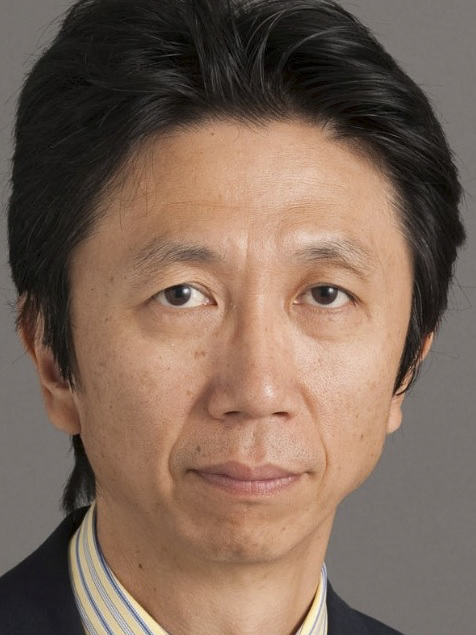
Naoaki Yamanaka (IEEE/IEICE Fellow)
Professor, Keio University, Japan
Title: 5G network application: Intelligent route and schedule control network for autonomous driving vehicle
Time: 17:30-18:00, Tuesday, February 18, 2020
Abstract:
Autonomous driving vehicle control by edge computer network having very short response time has been constructed. Each vehicle has an agent program on the edge and automatically moved to adjacent edge computer following to the vehicle movement. On the edge computer, agent program is processing with another vehicle agent in the cyber network. We employ triple redundancy and majority rule to achieve high-reliability and less than 10 ms control delay try to be guaranteed. In addition, each vehicle has an IoT sensor including fine-GPS, so all precious position and speed of the vehicle can be monitored. For conforming the effectiveness of the edge computer, pizza delivery service based on intelligent control method by position and demand. Delivery vehicle will share with other demand automatically and reduce delivery cost. In this network, demand prediction and demand behavioral change by incentive are used. This architecture and experimental results can be applied to the future smart and connected community.
Biography:
Dr. Yamanaka graduated from Keio University, Japan where he received B.E., M.E., and Ph. D. degrees in engineering in 1981, 1983 and 1991, respectively. In 1983 he joined Nippon Telegraph and Telephone Corporation’s (NTT’s) Communication Switching Laboratories, Tokyo, Japan. His research areas are Network Architecture in Optical Network, Cloud Computing, Smart Network, Communication Protocol, and Optical Switching System including Optical Devices. He was a vice director of Asia Pacific Board at IEEE Communications Society, and was an Editor of IEICE Transaction on Communications as well as a director at IEICE. He is an IEEE Fellow and an IEICE Fellow.
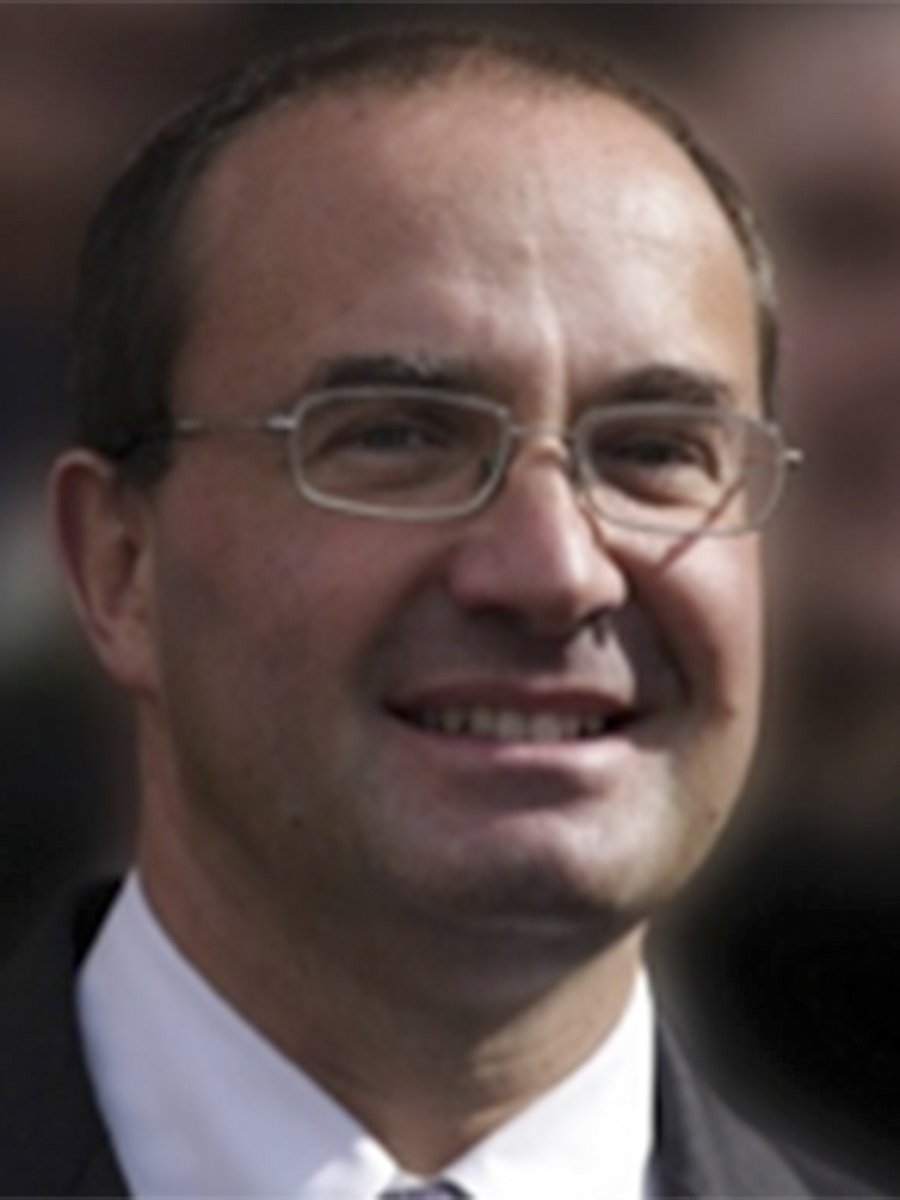
Michele Zorzi (IEEE Fellow)
Professor, University of Padova, Italy
Title: Satellite Communication at Millimeter Waves: a Key Enabler of the 6G Era
Time: 10:30-11:00, Tuesday, February 18, 2020
Abstract:
While technical standard development for 5G radio services is still an ongoing process, the scientific community is drafting the key drivers, requirements, challenges and re- search questions towards 6th generation (6G) networks. 6G developments will foster, among other innovations, the evolution of wireless systems towards a 3D, continuous and ubiquitous service coverage by complementing terrestrial networks with computing stations placed on satellite platforms. Along these lines, in this paper we demonstrate the feasibility of using millimeter wave (mmWave) frequencies to establish high-capacity satellite communications, in view of the huge traffic demands and service continuity requirements of forthcoming 6G applications. We also identify the most promising configuration(s) for satellite networking and discuss the design trade-offs in this domain.
Title: Scalable and Accurate Modeling of the Millimeter Wave Channel
Time: 17:30-18:00, Thursday, February 20, 2020
Abstract:
Communication at millimeter wave (mmWave) fre- quencies is one of the main novelties introduced in the 5th generation (5G) of cellular networks. The opportunities and challenges associated with such high frequencies have stimulated a number of studies that rely on simulation for the evaluation of the proposed solutions. The accuracy of simulations largely depends on that of the channel model, but popular channel models for mmWaves, such as the Spatial Channel Models (SCMs), have high computational complexity and limit the scal- ability of the scenarios. This paper profiles the implementation of a widely-used SCM model for mmWave frequencies, and proposes a simplified version of the 3GPP SCM that reduces the computation time by up to 12.5 times while providing essentially the same distributions of several metrics, such as the Signal-to- Interference-plus-Noise Ratio (SINR) in large scale scenarios. We also give insights on the use cases in which using a simplified model can still yield valid results.
Biography:
Michele Zorzi received his Laurea and Ph.D. degrees in electrical engineering from the University of Padova in 1990 and 1994, respectively. During academic year 1992/1993 he was on leave at the University of California San Diego (UCSD). After being affiliated with the Dipartimento di Elettronica e Informazione, Politecnico di Milano, Italy, the Center for Wireless Communications at UCSD, and the University of Ferrara, in November 2003 he joined the faculty of the Information Engineering Department of the University of Padova, where he is currently a professor. His present research interests include performance evaluation in mobile communications systems, random access in mobile radio networks, ad hoc and sensor networks and IoT, energy constrained communications protocols, 5G millimeter-wave cellular systems, and underwater communications and networking. He was Editor-in-Chief of IEEE Wireless Communications from 2003 to 2005, Editor-in-Chief of IEEE Transactions on Communications from 2008 to 2011, and is currently the founding Editor-in-Chief of IEEE Transactions on Cognitive Communications and Networking. He was Guest Editor for several Special Issues in IEEE Personal Communications, IEEE Wireless Communications, IEEE Network, and IEEE JSAC. He served as a Member-at-Large in the Board of Governors of the IEEE Communications Society from 2009 to 2011, and as its Director of Education from 2014 to 2015. He is a Fellow of the IEEE.